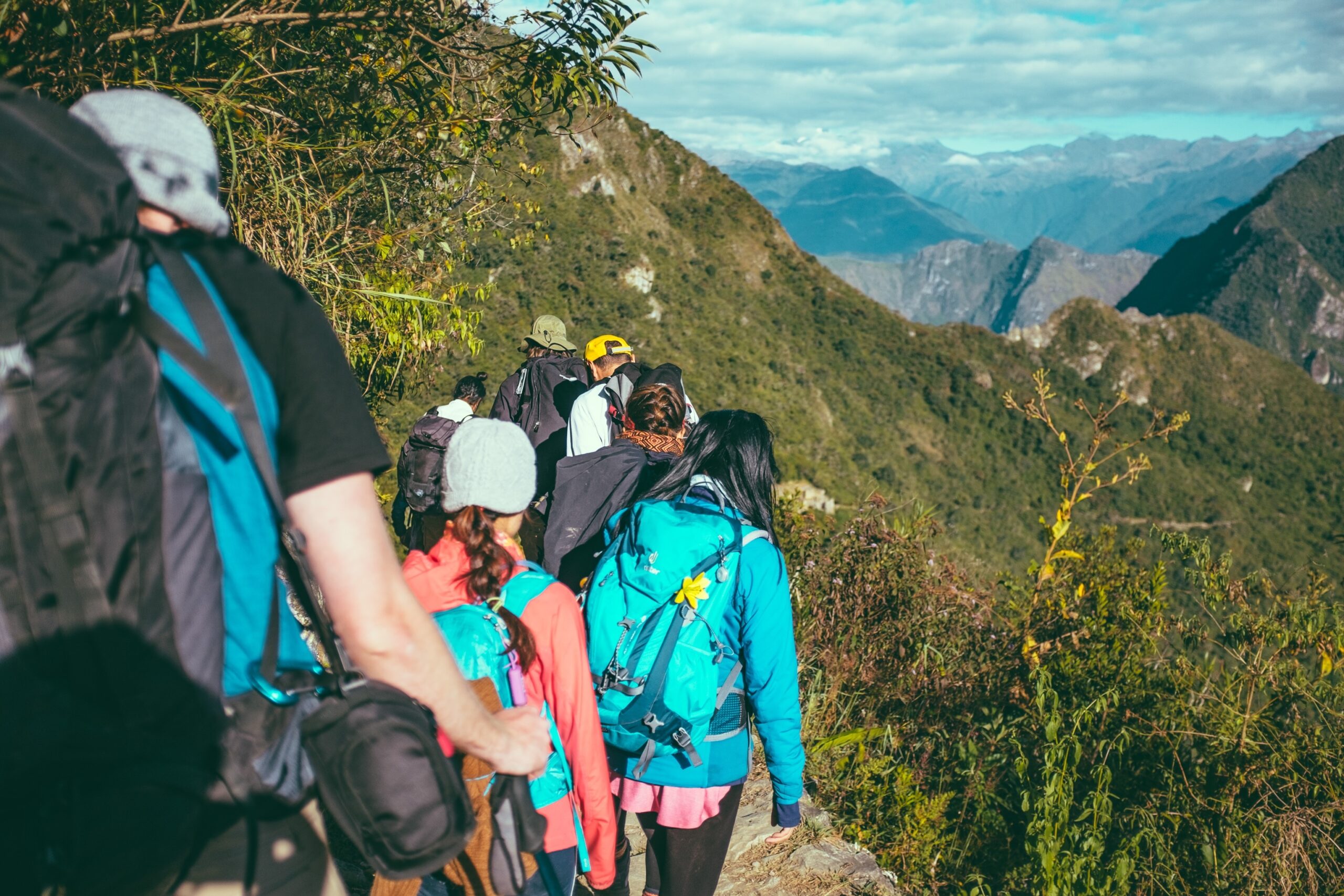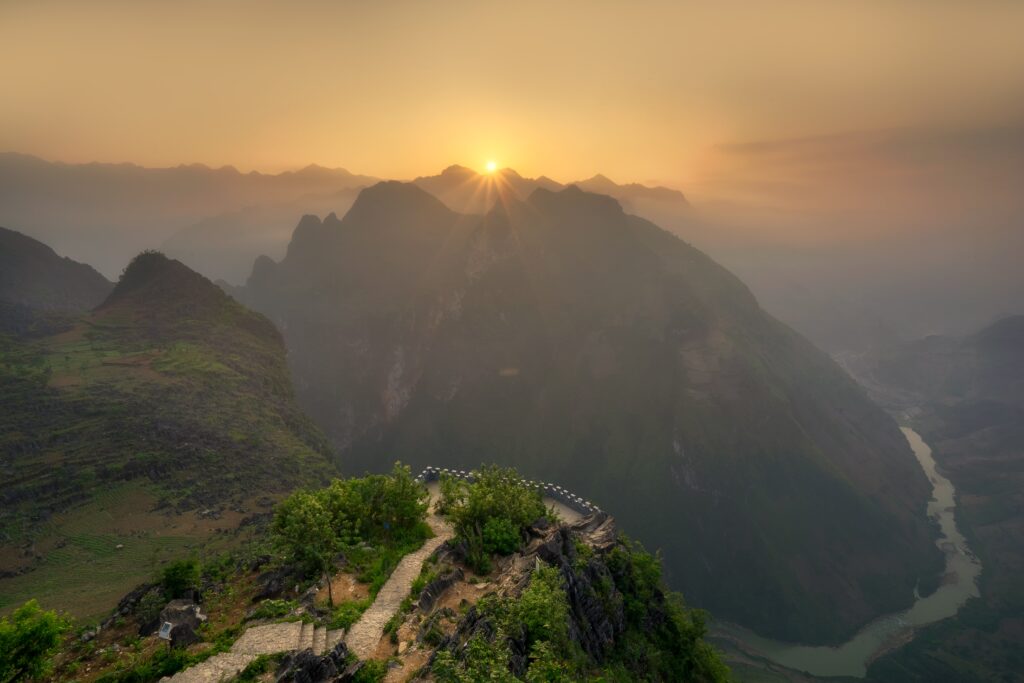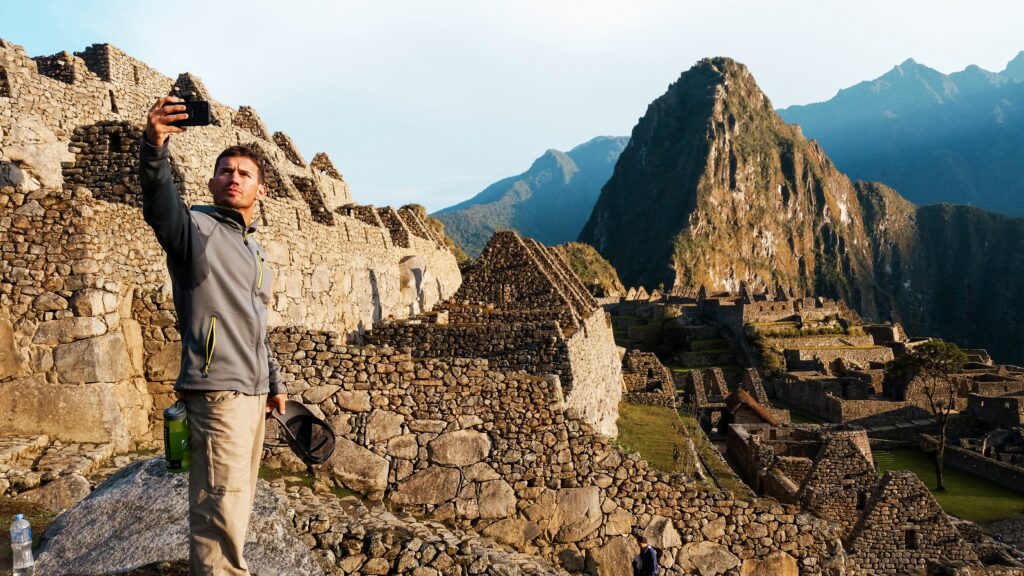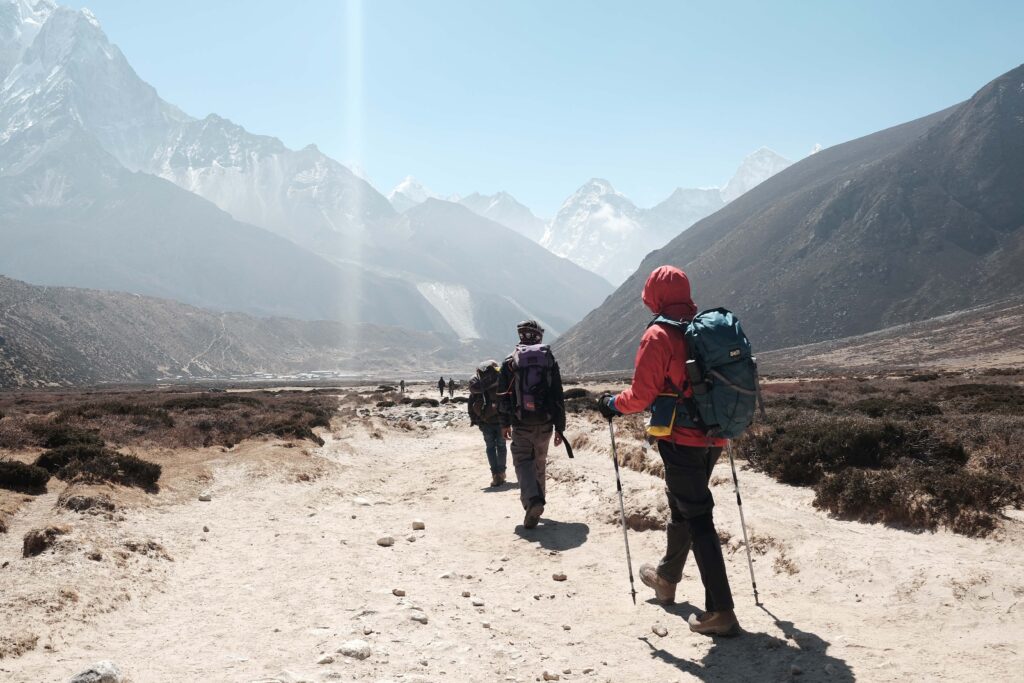Trekking the Inca Trail: A Journey to Remember
Recently updated on January 17, 2025
Total words: 2480

Table Of Content
- Preparing for the Trek
- The Best Time to Trek the Inca Trail
- The Beauty of the Inca Trail
- Challenges of Trekking the Inca Trail
- Tips for a Successful Trek
Introduction
Trekking the Inca Trail is an experience of a lifetime, one that will be remembered for years to come. The trail is a four-day journey, taking you through a variety of terrains and landscapes, and offering up stunning views of the Andes mountains. From the ancient ruins of Machu Picchu to the lush greenery of the Amazon rainforest, the Inca Trail is a truly unique and unforgettable experience.
Preparing for the Trek
Trekking the Inca Trail is a unique experience that requires a certain level of preparation. Whether you are a seasoned hiker or just starting out, it is important to make sure you are properly equipped to face the challenges of the trail.
Planning Your Route
When planning your route, it is important to consider the length and difficulty of the trails. The Inca Trail is typically divided into four sections: the Mollepata, the Classic, the One Day, and the Short Inca Trail. The Mollepata is the longest section and covers approximately 28.5 miles, while the Classic is the most popular and covers approximately 24 miles. The One Day and the Short Inca Trail are shorter and easier hikes, both covering approximately 9 miles. It is important to research the various sections of the trail to determine which one is best for you.
Packing the Right Gear
When it comes to packing the right gear for the Inca Trail, there are a few essential items that you should bring along. First, you should make sure to pack a waterproof jacket and waterproof hiking boots. These will help keep you dry and comfortable during the trek. Additionally, you should also pack a sleeping bag and tent to ensure you stay warm and protected during the night. Other items to consider include a flashlight, first aid kit, extra food, and sunscreen.
Physical Fitness
It is also important to make sure you are physically fit enough to take on the Inca Trail. The trail is quite strenuous and can be physically demanding, so it is essential to make sure you are in good shape to complete it. Before your trek, you should consider doing some light exercise such as jogging, walking, or swimming. Additionally, it is important to make sure you are well hydrated and have eaten enough food before starting the trail.
Acclimating to Altitude
The Inca Trail is located at high altitude, which can make the trek more challenging. To help prepare for this, it is important to spend at least a few days acclimating to the altitude before you begin your journey. This can be done by spending time in Cusco, which is located at around 11,000 feet. Additionally, you should take time to rest and adjust to the altitude before starting the trail.
Hiring a Guide
Finally, it is also important to consider hiring a guide for your trek. A guide can provide invaluable insight into the history and culture of the area, as well as provide additional support and safety during the hike. They can also help you navigate the route and ensure you have a safe and enjoyable journey.
The Best Time to Trek the Inca Trail
Trekking the Inca Trail is a popular activity for many. Whether it’s your first time or your fifth, it’s an amazing journey that you’ll never forget. But if you want to get the most out of your trek, you need to plan for the best time of year to go.

Weather Considerations
The Inca Trail is located in Peru, so it’s important to consider the local climate when planning your trek. Generally, the best time to trek is during the dry season, which runs from May to October. During those months, there is less chance of rain and the temperatures are more comfortable. This makes it easier to enjoy the trek and take in the beautiful scenery.
Busy Seasons
The best time to trek the Inca Trail can also depend on other factors. June to August is considered the peak season, which means that it can be very crowded. This can make getting permits and accommodations more difficult. If you’re looking for a quieter trek, you may want to consider going in the shoulder season (April and October) or the off-season (November to March).
Cultural Events
If you’re looking for a unique experience, you may want to plan your trek around a traditional event. The Inti Raymi Festival is held each year in June and celebrates the sun god with traditional music and dancing. The Qhapaq Ñan Festival is also held each year in August and highlights the Incan culture and history.
The Beauty of the Inca Trail
The Inca Trail is a stunningly beautiful trek that takes you through some of Peru’s most breathtaking scenery. From the high Andes Mountains to the lush Amazon rainforest, the four-day journey is an unforgettable experience of nature’s beauty. With its lush greenery, ancient ruins, and spectacular views, the Inca Trail is a must-see for any traveler.
High Andes Mountains
The Inca Trail begins in the high Andes Mountains, where you get to take in the dramatic scenery of snow-capped peaks and deep gorges. The mountains are home to a variety of wildlife, including llamas, alpacas, and condors. You’ll also get to experience a sense of history, as the Inca Trail was once used by the ancient Inca people.
Lush Amazon Rainforest
From the high Andes Mountains, the Inca Trail takes you through the lush Amazon rainforest. The rainforest is home to a variety of plants and animals, including jaguars, sloths, and toucans. This section of the trail is especially beautiful, as the sun shines through the canopy of trees and the air is filled with the sound of birds singing. It’s an incredible experience that you won’t soon forget.
Ancient Ruins
The Inca Trail also takes you through some of Peru’s most spectacular ancient ruins. The ruins date back to the ancient Inca civilization and offer a glimpse into the past. You’ll be able to explore the ruins and marvel at the incredible architecture of the Incas. It’s an amazing experience that’s sure to leave you in awe.
Spectacular Views
The Inca Trail also offers some of the most spectacular views of the Andes Mountains and the Amazon rainforest. As you trek along the trail, you’ll be able to take in the breathtaking vistas of snow-capped peaks, lush green valleys, and ancient ruins. It’s an unforgettable experience that will stay with you for years to come.
The Inca Trail is a stunningly beautiful trek that takes you on an unforgettable journey through some of Peru’s most magnificent scenery. From the high Andes Mountains to the lush Amazon rainforest, the four-day journey is an amazing experience that you won’t soon forget. With its lush greenery, ancient ruins, and spectacular views, the Inca Trail is a must-see for any traveler.

Challenges of Trekking the Inca Trail
Trekking the Inca Trail is a memorable experience, but it’s also no easy feat. Much of the trail is over 4,000 meters above sea level, so trekkers should be aware of the physical and environmental challenges they may face.
Altitude Sickness
One of the biggest challenges of trekking the Inca Trail is altitude sickness. Trekkers should spend at least two days in Cusco, the capital of the Inca Empire, to acclimatize properly. It’s also important to stay hydrated by drinking plenty of water and avoiding alcohol. However, it’s still common for trekkers to experience mild symptoms of altitude sickness, such as dizziness, headaches, and nausea.
Weather Conditions
The Andes Mountains are known for their unpredictable weather conditions. Throughout the year, it can range from warm and sunny to cold and wet. It’s important to pack the right clothing and equipment for the trip, including waterproof gear and sun protection. Trekkers should also be aware that rain can cause slippery trails and mudslides, which can be dangerous.
Difficult Terrain
The Inca Trail is known for its steep inclines and rocky terrain. Trekkers should be prepared for long days of strenuous hiking, with some sections taking up to 8 hours. It’s also important to have the right footwear, as the trail can be slippery in some sections. The trail also includes a number of steps, so trekkers should be prepared for some challenging climbs.
Limited Facilities
Along the Inca Trail, trekkers will have limited access to facilities. There are no shops or restaurants, so it’s important to bring plenty of food and water. There are also no toilets or showers, so trekkers should also bring their own toiletries and camping equipment.
Trekking the Inca Trail is an unforgettable experience, but it’s important for trekkers to be aware of the physical and environmental challenges they may face. By understanding the risks and preparing accordingly, trekkers can ensure a safe and enjoyable journey.
Tips for a Successful Trek on the Inca Trail
The Inca Trail is a challenging but rewarding journey that is sure to leave you with memories to last a lifetime. Whether you’re a novice or an experienced trekker, it’s important to prepare yourself for the challenge ahead. Here are some tips for making sure your trek is as successful and enjoyable as possible.

Do Your Research
Before you set off, it’s important to do your research and familiarize yourself with the terrain. The Inca Trail is a challenging hike, so you need to make sure you’re prepared for the physical demands it will place on your body. It’s also important to be aware of the risks involved and the local regulations.
Pack Smart
A successful trek relies on having the right equipment. Make sure to pack lightweight and practical items that will help you stay comfortable and safe on the trail. If you’re going to be trekking in cold weather, you’ll need warm layers, a waterproof jacket, gloves, and a hat. If you’re trekking in the summer, you’ll need to bring lots of water and some sunscreen.
Hire a Guide
Hiring a guide can make a huge difference to your trekking experience. Your guide will be able to provide invaluable advice and assistance throughout your journey. They’ll also be able to point out interesting landmarks and share stories about the local culture.
Stay Hydrated
Staying hydrated is essential for any trekking adventure. Make sure to carry plenty of water with you and drink regularly throughout the day. It’s also important to watch for signs of dehydration such as dizziness, headaches, and fatigue.
Take Breaks
The Inca Trail is a long and arduous trek, so it’s important to take regular breaks. Taking regular breaks will help you stay energized and reduce the risk of injury. Make sure to rest your muscles and take a few minutes to enjoy the stunning scenery around you.
Set a Reasonable Pace
It’s important to set a pace that’s comfortable for everyone in your group. Don’t rush ahead and leave your fellow trekkers behind. It’s also important to give yourself plenty of time to enjoy the experience and appreciate the scenery.
Stay Positive
The Inca Trail is a long and challenging journey, so it’s important to stay positive and keep your spirits up. Remember, the journey is as important as the destination. Focus on the beauty of the landscape and the sense of accomplishment you’ll feel when you reach the end.
Following these tips will ensure that your trek along the Inca Trail is a successful and enjoyable experience that you’ll never forget. So go ahead and start planning your journey today!
SEO Keywords: Inca Trail, Trekking, Successful Trek
Conclusion
Trekking the Inca Trail is truly a journey to remember! For those seeking an adventure of a lifetime, the Inca Trail is the perfect choice. The stunning landscape, fascinating ruins, and friendly locals make for an unforgettable experience. For anyone looking to stretch their legs and challenge themselves, trekking the Inca Trail is an experience that will stay with you forever. So, why wait? Start planning your Inca Trail adventure today and experience the wonders of the Andes for yourself!
1. What are the essential items to pack for trekking the Inca Trail?
When trekking the Inca Trail, it’s crucial to pack essentials such as sturdy hiking boots, moisture-wicking clothing, a lightweight sleeping bag, high SPF sunscreen, insect repellent, a refillable water bottle, snacks, a headlamp, and basic first aid supplies. Additionally, don’t forget your camera to capture the breathtaking views along the trail!
2. What is the best time of year to trek the Inca Trail?
The best time to trek the Inca Trail is during the dry season, which typically runs from May to September. These months offer clear skies, sunny days, and comfortable temperatures for hiking. Avoid the rainy season from November to March, as trails can be muddy and slippery, making the trek more challenging.
3. How physically demanding is the trek along the Inca Trail?
The trek along the Inca Trail is considered moderately challenging, with steep inclines, high altitudes, and varying terrain. It’s essential to be in good physical condition and acclimatize to the altitude before starting the trek. Regular exercise and cardiovascular training can help prepare you for the physical demands of the journey.
4. What are the highlights of trekking the Inca Trail?
Trekking the Inca Trail offers a once-in-a-lifetime experience, with highlights including stunning views of the Andes mountains, ancient Incan ruins like Wiñay Wayna and Inti Punku, and the iconic Machu Picchu citadel. Immersing yourself in the rich history and natural beauty of the region makes this trek truly unforgettable.
5. Are permits required to trek the Inca Trail?
Yes, permits are required to trek the Inca Trail, and they must be obtained in advance through a licensed tour operator. The Peruvian government limits the number of trekkers on the trail each day to protect the environment and preserve the experience for future generations. It’s essential to book your trek well in advance to secure permits for your desired dates.